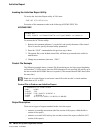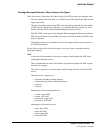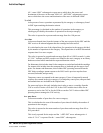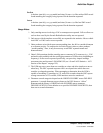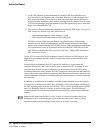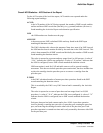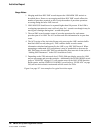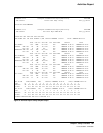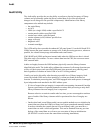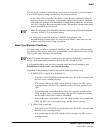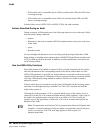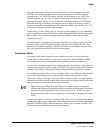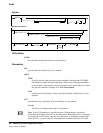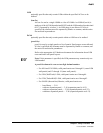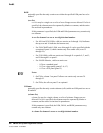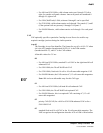
198 VM/HSC 6.0 System Programmer’s Guide
1st ed., 6/30/04 - 312579601
Audit Utility
The Audit utility provides the user the ability to perform a physical inventory of library
volumes and to optionally update the library control data set to reflect all observed
changes in cell storage for the specified component(s). Identification of the library
components to be audited may include:
• the entire library
•an ACS
• LSMs (or a single LSM) within a specified ACS
• certain panels within a specified LSM
• certain rows within a specified panel
• certain columns (cells) within a specified row
• empty cells only
• diagnostic cells
• in-transit cartridges.
The AUDIt utility does not audit the enhanced CAP panel (panel 11 on the 4410 and 9310
LSMs) because the panel contains no storage cells. Audit processing preserves, whenever
possible, the volume history/usage information and scratch status.
9360 (WolfCreek) LSMs perform an internal audit when the LSM access door is closed.
This takes only a few minutes. To move volume data into the CDS, the user must run an
HSC external audit.
Audits are lengthy because the LSM hardware physically scans the library elements
identified in the audit. The Audit utility validates the contents of cell storage locations on a
cell-by-cell basis across each specified LSM panel, then proceeds on a panel-by-panel
basis regardless of whether an entire LSM or an ACS is being audited.
Usually you invoke this utility after detecting a possible loss of library integrity. Such
events can include LSM access door opening or a volume not found at the data set
location. To minimize processing time, each LSM engaged in the audit process is managed
by an independent task attached in the HSC address space.
• If a loss of control data set integrity is suspected in an operating Automated Cartridge
System, specification of optional parameters restricts audit processing to only those
library elements where an integrity loss is suspected.
Because selective or restrictive audits take less time, you are encouraged to run these
types of audits if the library elements which experienced the loss of integrity are
known.
• On the other hand, a total library audit is an acceptable method to use to initialize the
control data sets when the LSMs in a library have been opened and manually loaded.
In order to initialize the control data set for a total library audit, you must have a
control data set with a valid configuration. This can be obtained from any previous
backup of the control data set or from a new execution of data set initialization
(SLICREAT is used to create the control data set during installation).
Audit



